We see asphalt cracking everywhere, like on roads and driveways. It happens for many reasons, like water damage and wear and tear. Experts say moisture is the main cause, leading to big problems.
Heavy rain and snow can damage asphalt. The cold weather makes asphalt shift, causing problems. Parking lots get damaged from heavy vehicles, needing regular care.
Asphalt gets old and needs fixing after a few years. Fixing small cracks is key to stop bigger problems. It’s important for keeping roads in good shape.
Key Takeaways
- Moisture is the leading cause of cracking in asphalt, leading to significant deterioration and pavement damage.
- Regular maintenance is necessary to prevent long-term issues caused by heavy rain and snow.
- The freezing and thawing cycle can cause structural integrity problems in asphalt.
- Traffic-related issues, including fatigue cracking, are common in parking lots and require proper road maintenance.
- Prompt filling of cracks is critical to prevent moisture damage and severe asphalt problems.
- Asphalt cracking can be prevented with routine sealing and proper drainage maintenance, which are essential aspects of road maintenance.
- Asphalt cannot support as much weight as concrete, making it a significant drawback in its application for load-bearing surfaces.
Understanding the Basics of Asphalt Pavement
Asphalt pavement is strong and lasts a long time. But, it can crack from heavy use and bad weather. We’ll explore the basics of asphalt pavement, including its components, installation, and lifespan.
The mix of asphalt is key to its durability. It has aggregate, asphalt cement, and additives. The quality of these parts affects how long the pavement lasts. Installing it right is also important. This means laying it at the right temperature, compacting it well, and letting it cool and harden.
Components of Asphalt Mixture
The asphalt mix is vital for the pavement. It has aggregate, asphalt cement, and additives. The aggregate gives strength, while asphalt cement holds it together. Additives help the pavement last longer by fighting cracks and damage.
The Role of Proper Installation
Installing asphalt right is key to its long life. This means laying it at the correct temperature, compacting it well, and letting it cool and harden. Bad installation can shorten its life, causing it to wear out faster.
Expected Lifespan of Asphalt Surfaces
The lifespan of asphalt varies. It depends on the mix quality, installation, and weather. A well-kept asphalt can last 20-30 years or more. But, neglect, heavy traffic, and harsh weather can shorten its life.
Regular care is vital for asphalt pavement. This includes sealing cracks, fixing potholes, and resurfacing when needed. Knowing how to care for asphalt helps keep our roads safe and durable for a long time.
Common Causes of Asphalt Cracking
Asphalt cracking is a common problem that can damage pavement if not fixed. Several causes include water damage, trees and shrubs, fuel and oil, poor installation, weather, and wear and tear. These factors can cause cracks in asphalt surfaces, leading to damage.
Key factors for asphalt cracking include exposure to water, heavy vehicles, temperature changes, heavy traffic, and sun exposure. For example, water can make asphalt crack by seeping into it. Heavy vehicles can also cause cracks due to their weight and pressure.
Here are some common causes of asphalt cracking:
- Water damage: Water can seep into the asphalt and cause it to deteriorate, leading to cracks and pavement damage.
- Poor asphalt installation: If the asphalt is not installed correctly, it can lead to cracks and other issues.
- Weather: Seasonal temperature changes can cause the asphalt to expand and contract, leading to cracks and pavement damage.
To prevent asphalt cracking, regular maintenance is key. Apply a seal coat every couple of years to protect the asphalt. Also, ensure proper drainage during installation to prevent water buildup and cracks.
| Cause of Cracking | Description |
|---|---|
| Water damage | Water seeps into the asphalt, causing it to deteriorate |
| Poor asphalt installation | Asphalt is not installed correctly, leading to cracks and other issues |
| Weather | Seasonal temperature changes cause the asphalt to expand and contract, leading to cracks |
Weather-Related Damage to Asphalt Surfaces
Asphalt surfaces can get damaged by the weather. This damage includes cracks and potholes. The freeze-thaw cycle, heat, and rain are big reasons for this.
Water in the asphalt freezes and expands. This causes cracks. The freeze-thaw cycle weakens the asphalt. Heat expansion makes the asphalt soft and crack-prone. Rain can wash away the base, causing damage.
Some key factors for weather damage are:
- Freeze-thaw cycle: This causes the asphalt to expand and contract, leading to cracks and other forms of damage.
- Heat expansion: High temperatures can cause the asphalt to soften and become more prone to cracking.
- Rain damage: This can wash away the pavement’s gravel and sand base, leading to cracks and other damage.
To fight weather damage, regular maintenance is key. This includes sealing cracks and fixing potholes. Also, stop water from getting into the surface. These steps help the asphalt last longer and save on repairs.
| Type of Damage | Description | Prevention |
|---|---|---|
| Freeze-thaw cycle | Causes asphalt to expand and contract, leading to cracks | Seal cracks, repair potholes |
| Heat expansion | Causes asphalt to soften and become prone to cracking | Use heat-resistant materials, repair cracks |
| Rain damage | Washes away pavement’s gravel and sand base, leading to cracks | Improve drainage, seal cracks |
Traffic Load and Weight Distribution Issues
Excessive weight and uneven distribution can damage asphalt surfaces. The amount and weight of traffic can wear down the pavement. Weight distribution is key, as bad distribution adds stress to the asphalt.
Some common issues include:
- Rutting, caused by vehicle traffic creating depressions in the pavement in the shape of vehicle tracks
- Shoving, which occurs in areas with frequent heavy vehicle traffic, resulting in raised bumps as asphalt endures undue distress
- Cracking from improper weight distribution across the asphalt surface
Regular maintenance and proper weight distribution can prevent pavement damage. Understanding traffic load and weight distribution helps us take steps to protect our asphalt.
Managing traffic load and weight distribution reduces the risk of damage. This saves time and money on repairs. It’s vital to consider weight distribution in high-traffic areas to prevent pavement damage and ensure driver safety.
Environmental Factors Affecting Asphalt Integrity
Exploring what damages asphalt surfaces, we find environmental factors play a big role. These can cause cracks and wear down the asphalt. Chemical exposure weakens the asphalt, making it more likely to get damaged.
UV ray damage is another big factor. Sunlight can make asphalt brittle and crack, more so in hot areas. Also, vegetation impact can harm asphalt. Trees and shrubs can damage it with their roots and weeds.
Some key environmental factors that harm asphalt include:
- Chemical exposure from automotive fluids and other substances
- UV ray damage from prolonged sunlight exposure
- Vegetation impact from trees and shrubs
Regular upkeep and repairs can fight these environmental issues. Fixing problems fast and using good materials helps. This way, we can keep our asphalt in good shape.
| Environmental Factor | Effect on Asphalt |
|---|---|
| Chemical Exposure | Weakened binding properties, increased risk of damage |
| UV Ray Damage | Brittleness, cracking, and deterioration |
| Vegetation Impact | Damage from roots and weeds, structural instability |
Knowing how environmental factors affect asphalt helps us protect it. We can keep our surfaces safe and strong for a long time.
Identifying Different Types of Asphalt Cracks
Asphalt cracks come in many forms, like alligator cracking, linear cracking, block cracking, and edge cracking. Each crack looks different and is caused by various factors. Knowing about these cracks helps us fix and maintain them better.
These cracks can be spotted by how they look and where they are. For example, alligator cracking looks like an alligator’s skin and happens where lots of cars pass by. Linear cracking shows up as straight lines or parallel cracks. Block cracking looks like big squares and happens because of shrinkage. Edge cracking is near the pavement’s edges and is often due to settling or lack of support.
Characteristics of Asphalt Cracks
Here are some key traits of each type of asphalt crack:
- Alligator cracking: caused by fatigue, often found in areas with heavy traffic
- Linear cracking: can be caused by shrinkage or settlement, appears as straight lines
- Block cracking: caused by shrinkage, appears as large rectangular cracks
- Edge cracking: occurs near the edges of the pavement, often caused by settlement or lack of lateral support
Regular upkeep, like sealing and fixing cracks, can stop them from getting worse. It’s important to fix these cracks quickly to avoid more damage and keep the pavement lasting longer.
By knowing about the different types of asphalt cracks and why they happen, we can act early to stop and fix them. This helps keep our roads and pavements safe and lasting longer.
| Type of Crack | Characteristics | Cause |
|---|---|---|
| Alligator Cracking | Network of cracks | Fatigue, heavy traffic |
| Linear Cracking | Straight lines or cracks | Shrinkage, settlement |
| Block Cracking | Large rectangular cracks | Shrinkage |
| Edge Cracking | Cracks near edges | Settlement, lack of lateral support |
Prevention Strategies for Asphalt Maintenance
We know how vital asphalt maintenance is for keeping asphalt surfaces in top shape. Regular checks help us spot problems early. This way, we can fix them before they get worse. Also, making sure water drains well is key to avoiding damage and cracks.
Sealcoating is another important step. It shields the asphalt from UV rays, oil spills, and more. Using a top-notch sealcoat can stop cracks and make the asphalt last longer. Plus, fixing any damage right away helps avoid bigger issues.
Regular asphalt maintenance brings many benefits. It makes the asphalt last longer, cuts down on damage, and keeps it looking good. It also saves money by avoiding expensive repairs or replacements.
By using these prevention strategies, we keep our asphalt surfaces in great shape for a long time. Keeping up with asphalt maintenance and fixing any damage quickly are key. They help our asphalt last longer and save us from costly repairs later on.
Professional Repair Solutions and Techniques
Asphalt surfaces can get worse if cracks aren’t fixed. It’s best to fix them quickly to avoid more damage. Professional fixes like crack sealing, surface treatments, and full-depth repairs can make asphalt last longer.
There are many ways to fix asphalt cracks. Crack sealing stops water from getting in and causing more harm. It fills the crack with a special sealant to stop it from getting bigger.
Methods for Repairing Asphalt Cracks
- Crack sealing: filling cracks with a sealant to prevent water from seeping in
- Surface treatments: applying a layer of asphalt emulsion to the surface to protect it from damage
- Full-depth repairs: removing and replacing the damaged area with new asphalt
Keeping up with maintenance and fixing cracks on time can save a lot of money. The right professional fix can make your asphalt last longer and be a good investment.
It’s key to hire a professional for the repair. They know how to do the job right and safely. With the right tools and materials, you can stop more damage and keep your asphalt looking great.
Conclusion: Protecting Your Asphalt Investment
Asphalt pavement is a big deal for your property’s look and function. It can last up to 25 years with the right care. But, ignoring it can lead to expensive fixes later.
Cracks and wear can show up in 3 to 5 years. Fixing them early can save you a lot of money. Solutions like crack sealing and surface treatments can make your asphalt last longer.
At Priority Paving, we know how important asphalt care is. We offer top-notch maintenance and repair to keep your pavement in great shape. Our 38 years of experience help us prevent costly damage. Contact us to find out how we can help.

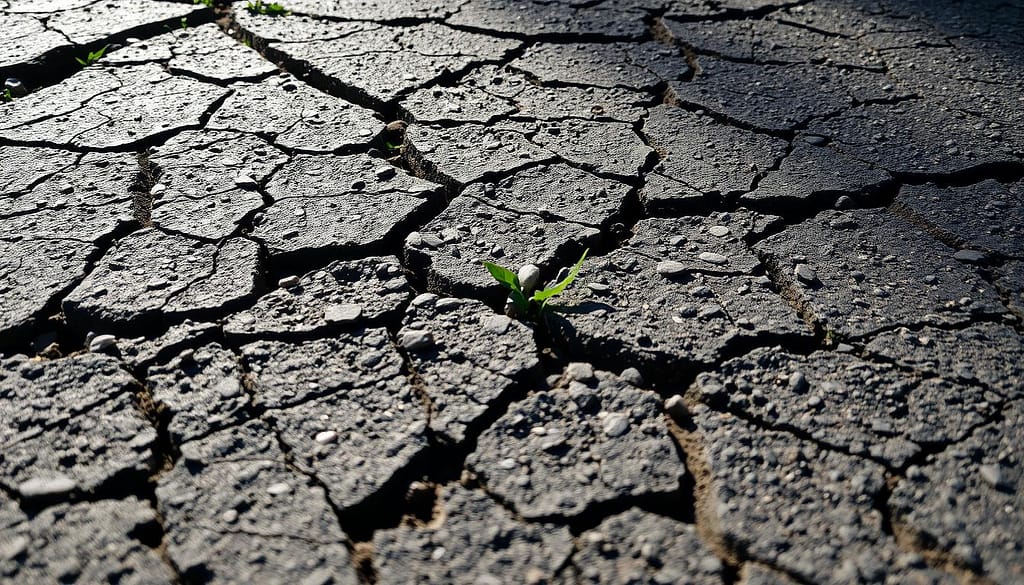

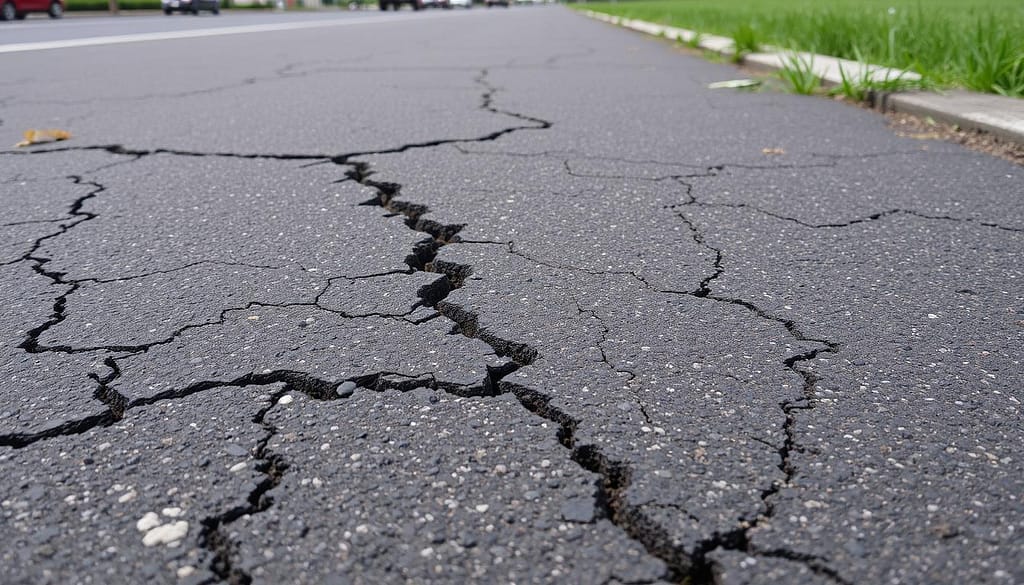
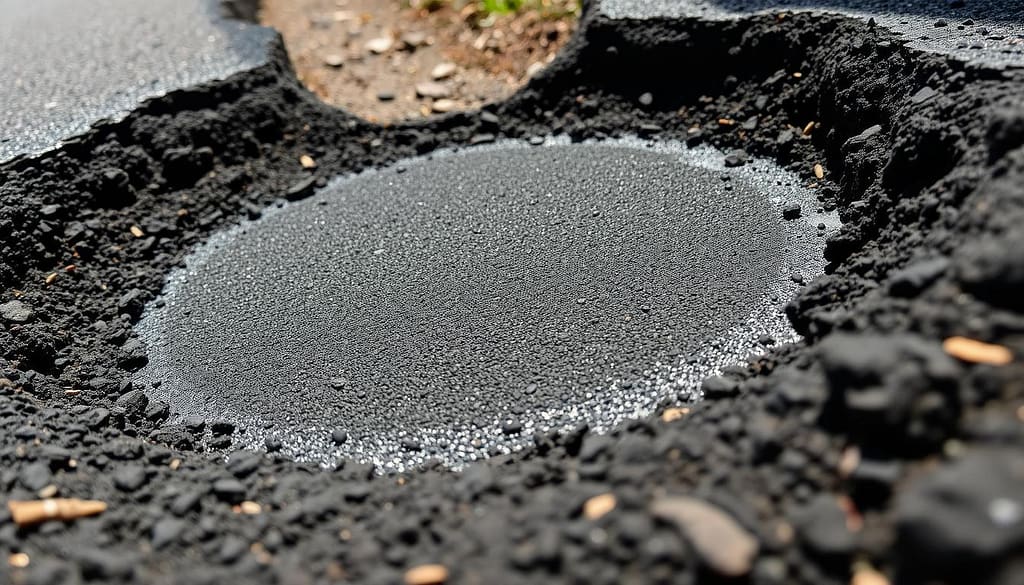
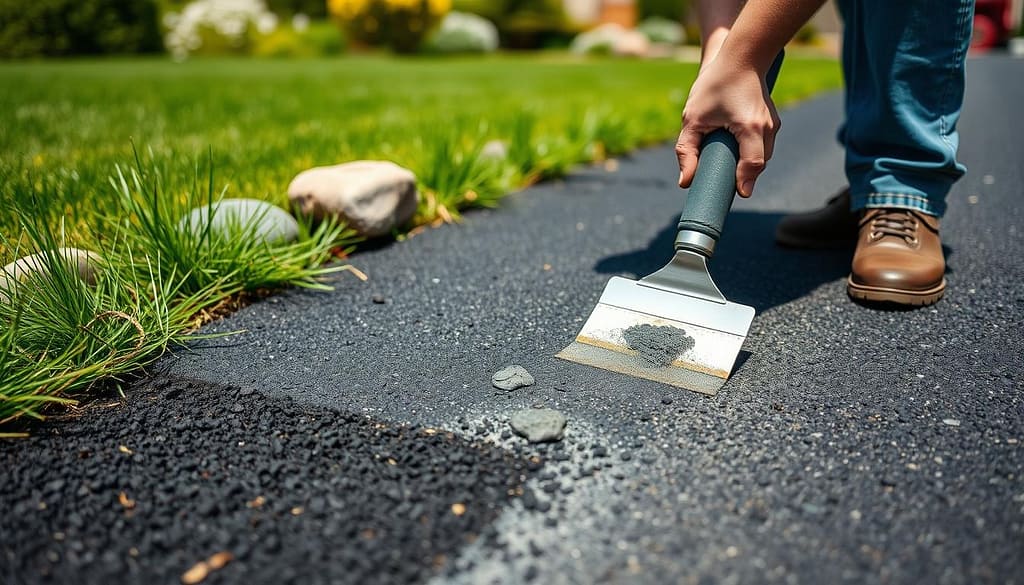
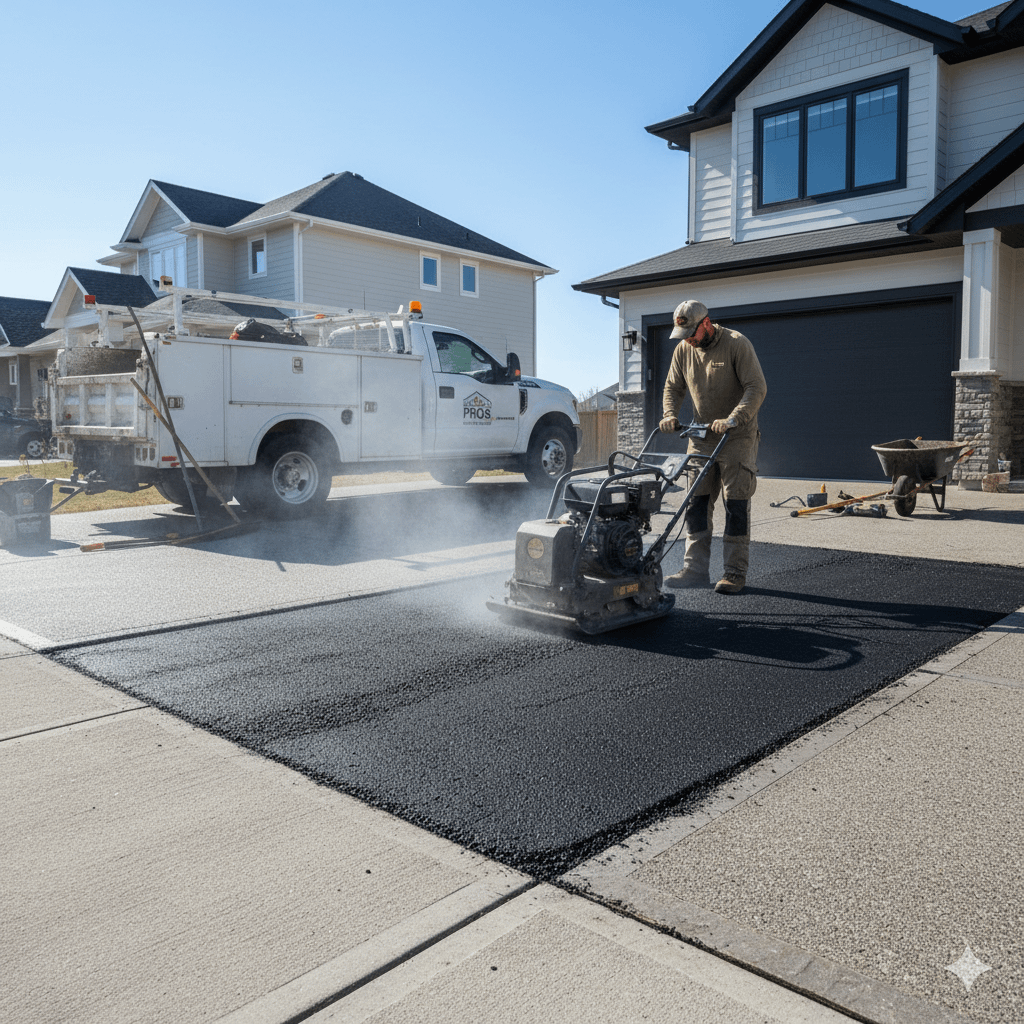
Pingback: Sealcoating Marietta GA - Atlanta Paving Solutions